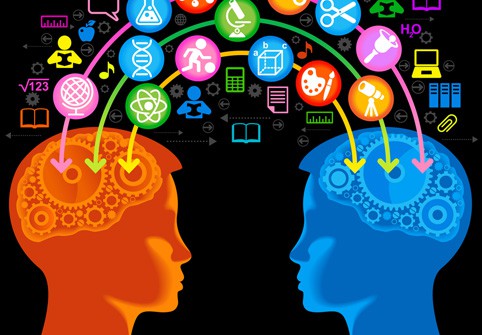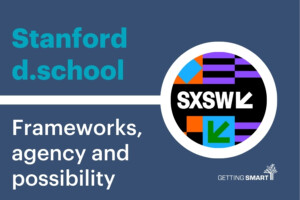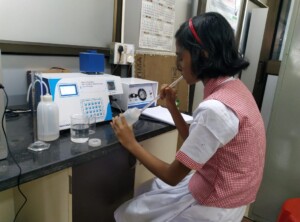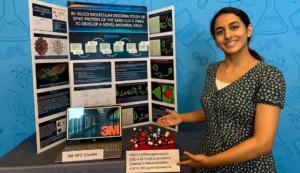Solving Global Challenges with Cross Disciplinary Initiatives

By: Julie Keane, PhD
Global challenges can only be addressed by cross disciplinary initiatives that bring together science art and the humanities. We must cross these boundaries.
The overarching theme at Humanities, Arts, Science and Technology Alliance and Collaboratory, (HASTAC), the 6th Annual International Conference in Lima, Peru, focused on strengthening ties so tech innovation doesn’t just occur in a U.S. driven vacuum and can be more effectively leveraged in the future. Our 24/7 information age has given us all powerful tools that enable us to create, share, and collaborate on a scale that amplifies innovation and allows it to spread from one corner of the world to another. But it can also hinder us by making it more difficult to find some time to step back from our daily focus and reflect on the rapid change and social impact of new technologies around the globe. It’s easy to lose sight in the course of our daily work of the big and vibrant world outside our classroom windows where new and dynamic educational and technological innovations are blooming. It is important that we realize the discourse on education reform is typically U.S. centric. Therefore we must continually work harder to not just incorporate, but meaningfully participate in, global educational approaches and dialogue with international partners.
HASTAC 2014, hosted by the Ministry of Culture of Lima, Peru, was the first HASTAC conference to be hosted outside of North America. Lima offers a rich and vibrant place to gather and focus on global thinking. The conference was attended by several other ministers from South and Central America (including Costa Rica) as well as representatives from the Organization of American States.
For the last 25 years VIF has successfully partnered with districts and schools to prepare global-ready teachers and students. VIF was invited to be on a curated panel with other leaders in the field of digital badging and was curated by David Theo Goldberg, Director of the California Humanities Research Institute. Our goals for attending the conference, designed to bring diverse perspectives and expertise together, was to participate on the panel, present their global ready badging system, and engage with academics, designers, educators and policymakers to critically discuss challenges in current work and opportunities for new collaborations. We are thrilled to share our main observations and learning from the conference.
6 Main Themes and Takeaways from HASTAC:
- Solve challenges through cross- disciplinary initiatives. Keynote Sherry Tross, Executive Secretariat for Integral Development, Organization of American States (OAS), focused need to bring together technology, critical thinkers, and international networks and articulate these relationships through multidisciplinary projects and initiatives. Global challenges can only be solved addressed by cross-disciplinary initiatives that bring together education, science art humanities. We must cross these boundaries. We need acknowledgement of diverse skills (through initiatives like open badging) that align with OAS to push innovation and education access for economic development. Cross-institutional collaboration (academia, research organizations, cultural institutions, government, business community, etc.) is critical for social and economic development and education advancement. Open technology, open learning, open and interoperable platforms make this kind of collaboration and innovation possible and has to be protected as a public benefit.
- Open badging can push innovation. David Theo Goldberg from the University of California, Irvine, moderated our panel Open Badges for New Opportunities: Learning Anywhere, Anytime with Digital Credentials and we joined panel participants Cliff Manning from Make waves (UK) and James Diamond and Pilar Gonzalez from the Center for Children and Technology, Education Development Center, INC. We had a productive session about open digital badges can undermine the advantages of privilege and create new networks based on competencies and expertise. It was a very interesting discussion amongst our guests as we examined how even one badge can unlock future learning opportunities. Furthermore, building diverse skills through initiatives like open badging can push innovation and education access for economic development.
- Credential for life. Keynote Mitchell Baker, Executive Chairwoman of the Mozilla Foundation focused on the theme of education and learning today. We all understand the open Internet has changed where and how people learn. It is not clear where learning will end up and what structural changes we’ll have but yet the convention for everyone to go to a centralized place, credential for life – should be a topic for today’s educators. “Our collective goals should be to teach and learn”, said Baker. “To empower communities is more radical than it sounds.
- The digital divide. A panel of theorists across disciplines from New York University, Duke University, and University of California, Berkeley dug deep into an interesting topic — The Digital Divide and the Questions of Equality of Access to Technologies and the Internet in Latin America and the Caribbean. Boundaries of cultures means that platforms and forms of communications have to be diverse. The modern teacher today is designing their learning spaces for openness and collaboration. Open is contextual. Openness can’t be a closed debate, certainly not in today’s classroom.
- New technologies. Speaker Luis Jaime Castillo Butters: Viceministro de Patrimonio Cultura e Industrias Culturales, Ministerio de Cultura del Peru, outlined new technologies that are being deployed across the Americas by diverse communities to preserve heritage and culture, expand access to educational opportunities, create innovative hubs that spark and sustain economic, social and political development. It seemed the main theme was understanding the goal of strengthening the protection of cultural heritage is where addition and integration of new technology elements has enormous potential.
- STEM needs humanities. Connie Yowell – Director of US programs, MacArthur Foundation spoke about the critical role of the humanities in STEM (Science Technology Engineering Mathematics). Divorcing STEM learning and development initiatives from the disciplinary focus of the humanities disregards the relationship and historical development of technology/science and society thereby preventing rigorous investigation and exploration. It also undermines development because it ignores the critical role that culture plays in providing the foundation and context for STEM education and future innovation. Yowell elaborated more by saying “an education in crisis doesn’t know what to do with the technology and social shifts that are occurring.” Connected learning that is happening between formal and informal institutions requires a new infrastructure.
HASTAC began in 2002 and is the Duke based research center for the digital humanities and also the organizer of the MacArthur Digital Media and Learning Competition. The organization continues to flourish, as a respected community comprised of over 400 organizations and 13,000 global educators, humanists, artists, social scientists, scientists, and technologists members who share the same goal to equivalently transform the future of learning. Members have an organized forum to share their specialized expertise along with news, tools, research, insights, and projects, which promote engaged learning for a global society. Issues of access and equality are as important to HASTAC’s mission as the latest technological innovations; creative contribution is as important as critical thinking.
Julie Keane is a PhD and Senior Research Associate at VIF International Education which builds global education programs that prepare students for success in an interconnected world.




Blanca
Buenas.
Es interesante encontrar maneras para que todos podamos tener las mismas oportunidades de aprendizaje, con ganas de colaborar, cooperar intentando llegar con más rapidez y facilidad a cualquier rincón. Por otro lado, basar todo poniendo como final la economía, es seguir en una crisis de valores, pues si hay avance, la economía tendría que fluir con más equidad, conseguir evitar crisis que afectan siempre a un sector, mientras otro se enriquece. El final de todo tendría que ser conseguir una armonía, en la que se valore a todos por su aportación, ya sea el que limpia pues es un trabajo poco agradecido pero muy necesario, como el que investiga para una cura o avance tecnológico , no quiero decir que todos tengamos que tener el mismo sueldo, pero sí el reconocimiento intentando no explotar a nadie para conseguir el enriquecimiento de unos pocos. Con lo que el sostenimiento económico no ha de ser el principal objetivo, sino que gracias a las buenas economías, bien dirigidas, repartidas, se consigue unos buenos aprendizajes para todo el que quiera entrar en ese fascinante mundo, y buen respeto pare los que deciden no entrar.
Gracias